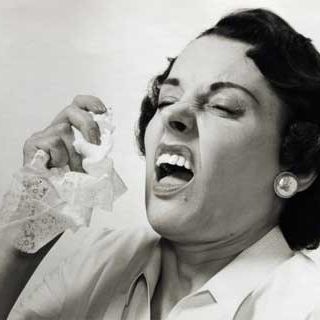In horror movies, the transition of a perfectly healthy woman to that of a possessed one is most often characterized by the progression of her dark circles (2008 thriller 1920). The same goes for portrayals of a drug addict or a person with near-fatal mental health issues (1999 drama Girl, Interrupted). There’s also a 2013 horror film called Dark Circles, seriously. Dark circles have become a signifier of an exaggerated abnormal reality on screen — in real life, however, it’s an everyday reality for many.
Dark circles occur in people whose skin under the eyes, which is thinner than the skin on the rest of the face, is susceptible to hyperpigmentation. This happens when melanin, the pigment that lends color to skin, deposits in excess in patches on the skin, most commonly under the eyes. People who have a high level of melanin in their skin — South Asians for example — are more likely to have dark circles. But even as the #brownisbeautiful movement has taken root to celebrate darker tones of skins and reject the whitewashing of beauty in Eastern nations, the very normal occurrence of dark circles is still subjected to extensive corrective treatments and painted as demonic in on-screen narratives.
Dark circles can also be a symptom of fatigue caused by lack of sleep, which makes the skin underneath the eyes dull and pale. The underlying blood vessels start to be visible through the skin, manifesting as dark circles. (According to a recent Fitbit study, Indians are the second-most sleep-deprived people on the planet and get the lowest amount of REM sleep — 77 minutes — on an average per night.)
Dark circles can also be caused by straining one’s eyes for long periods of time, say at a computer screen in the workplace — this enlarges underlying blood vessels, again increasing their visibility through thin under-eye skin. Dark circles have other, more benign and uncontrollable causes — allergies, which compel the body to release histamines to counter allergens, can cause blood vessels to dilate, thereby increasing their visibility; overexposure to the sun can increase pigmentation in the overly-sensitive under-eye skin; age, with which skin underneath the eyes starts to thin; and genetics also play a part in who inherits the trait to be vulnerable to dark circles.
Related on The Swaddle:
Controversial Crush: Jameela Jamil and Her Brand of Body Positivity
The average person probably cannot avoid dark circles their entire life — but nonetheless will have to deal with a society that considers them ugly or unhealthy, and a beauty industry that will sell products to reverse the completely natural phenomenon.
Except, reversing dark circles is not possible. Hiding them, by investing in expensive concealers, is a possibility often marketed as a necessity, especially for women.
The treatments to remove dark circles range from DIY cold compresses and cucumber circles, to tricky, expensive and risky chemical peels, medical tattoos, tissue fillers, fat removal, laser surgery and surgical implants of fat or synthetic products.
The marketing for these corrective treatments often take the same tone as that which filmmakers use to signal worse days to come — dark circles are shown as impeding social or professional progress for a woman, a problem she magically cures by diligently applying some ‘unique’ under-eye cream.
Sure, dark circles can be a symptom of sub-par lifestyles — they may even be prevented if a person gets enough sleep or drinks enough water. But dark circles are just one of those natural bodily processes that occur to an individual by virtue of them living and functioning in society. Admittedly, dark circles can be an indication of poor health, and that’s serious — but the near-ubiquity of them means shaming people who have them by peddling corrective, often ineffective beauty treatments to them only seeks to worsen anxieties.
To be clear, having dark circles is not what makes a person unhealthy — a person could have developed them during a period when they were sleeping less, drinking less water and not taking care of their diet. Peddling ‘cures’ for dark circles, most of them directed at hiding them, but not fixing the underlying problem, reinforces superficial beauty norms more obsessed with what’s on the surface, instead of what’s underneath and may actually be harmful.




